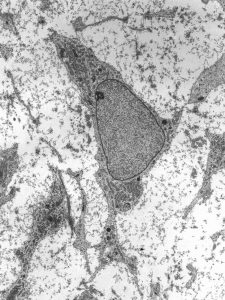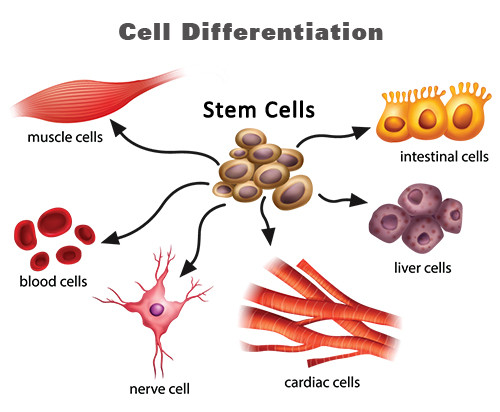Stem cells have been an interesting topic within the medical field for ages. There lies a certain polarizing feel when one talks about the use of stem cells in general. This is the result of different societal values when associated to stem cell usage. We are going to address in particular, stem cells as a whole and what they are. We will also delve deeply into the field of bioprinting and how it is leveraging stem cells for the present and future of this field.
Stem cells are cells with the potential to develop into many different types of cells in the body. They serve as a repair system for the body. There are two main types of stem cells: embryonic stem cells and mesenchymal stem cells. Embryonic stem cells are pluripotent. This means they are able to differentiate into all derivatives of the three primary germ layers: ectoderm, endoderm and mesoderm. This means they can develop into each of the more than 200 cell types of the adult body as long as they are specified to do so. Mesenchymal stem cells are characterized morphologically by a small cell body with a few cell processes that are long and thin. These type of stem cells are multipotent stromal cells that can differentiate into a variety of cell types, including osteoblasts (bone cells), chondrocytes (cartilage cells), myocytes (muscle cells) and adipocytes (fat cells which give rise to marrow adipose tissue).The cell body contains a large, round nucleus with a prominent nucleolus, which is surrounded by finely dispersed chromatin particles, giving the nucleus a clear appearance. The remainder of the cell body contains a small amount of Golgi apparatus, rough endoplasmic reticulum, mitochondria and polyribosomes. The cells, which are long and thin, are widely dispersed and the adjacent extracellular matrix is populated by a few reticular fibrils or fibers.
Stem cells are amazing in terms of the ability they provide medical professionals to create cells for different uses within the body. For example, one can take a stem cell and convert it to skin cells and then induce differentiation. This allows for the stem cell to progress to a larger scale such as a tissue for example. The differentiation process of a stem cell is the key to building new cells for different uses within the body. This is why stem cells are often cited in different areas as well in terms of medical solutions. However, the entire potential of stem cells can be harnessed only upon the resolution of associated issues and hurdles that fall in the way. Some of the key issues that limit the further exploration of stem cells in clinical trials include: the exploration of stem cells in clinical trials include safety concerns, formations of teratomas, transplantation issues and autoimmune response, and also ethical dilemmas. Teratomas are a type of germ cell tumor that may contain several different types of tissue, such as hair, muscle, and bone. Teratomas are of a huge concern for stem cell usage due to the ability for stem cells to differentiate. Differentiation refers to how cells can change into new cell types. Without proper control of the differentiation process, teratomas can form quickly, and this may lead to cancerous growth within the body. The strength of differentiation is also a weakness for usage within the clinical setting for stem cells and bioprinting in particular. Stem cells typically are used within syringe pump extrusion based bioprinting technology.
Extrusion based Stem Cell Bioprinting
Stem cells are still an interesting topic in the medical field. It will be intriguing to understand more of the mechanisms that lead to better control of stem cells. We are still learning and researching these methods. Ideally, we will try to talk to individuals who are focused on stem cell research and bioprinting applications in featured interviews soon.
Subscribe to Our Email Newsletter
Stay up-to-date on all the latest news from the 3D printing industry and receive information and offers from third party vendors.
You May Also Like
3D Printing Unpeeled: Biofuel Waste to Filament & Sustainable Photopolymers
I can’t ever remember a day with so many potentially high impact news stories have come out. In one story, we all know that there are problems with the safety...
Finnair Hires AM Craft to 3D Print Plastic Parts for Aircraft Interiors
Riga-based AM Craft, a supplier specialized in 3D printing aviation components and certified under EASA Part 21G, announced a significant achievement today. The company will assist in upgrading Finnair’s A320...
3DPOD Episode 198: High Speed Sintering with Neil Hopkinson, VP of AM at Stratasys
Neil Hopkinson, a pioneering 3D printing researcher, played a pivotal role in developing a body of research that is widely utilized today. He also invented High Speed Sintering (HSS), also...
3D Printing Webinar and Event Roundup: May 12, 2024
Webinars and events are picking up in the AM industry this week! ASTM International continues its Professional Certificate Course and Stratasys continues its advanced in-person trainings, while 3D Systems is...


































